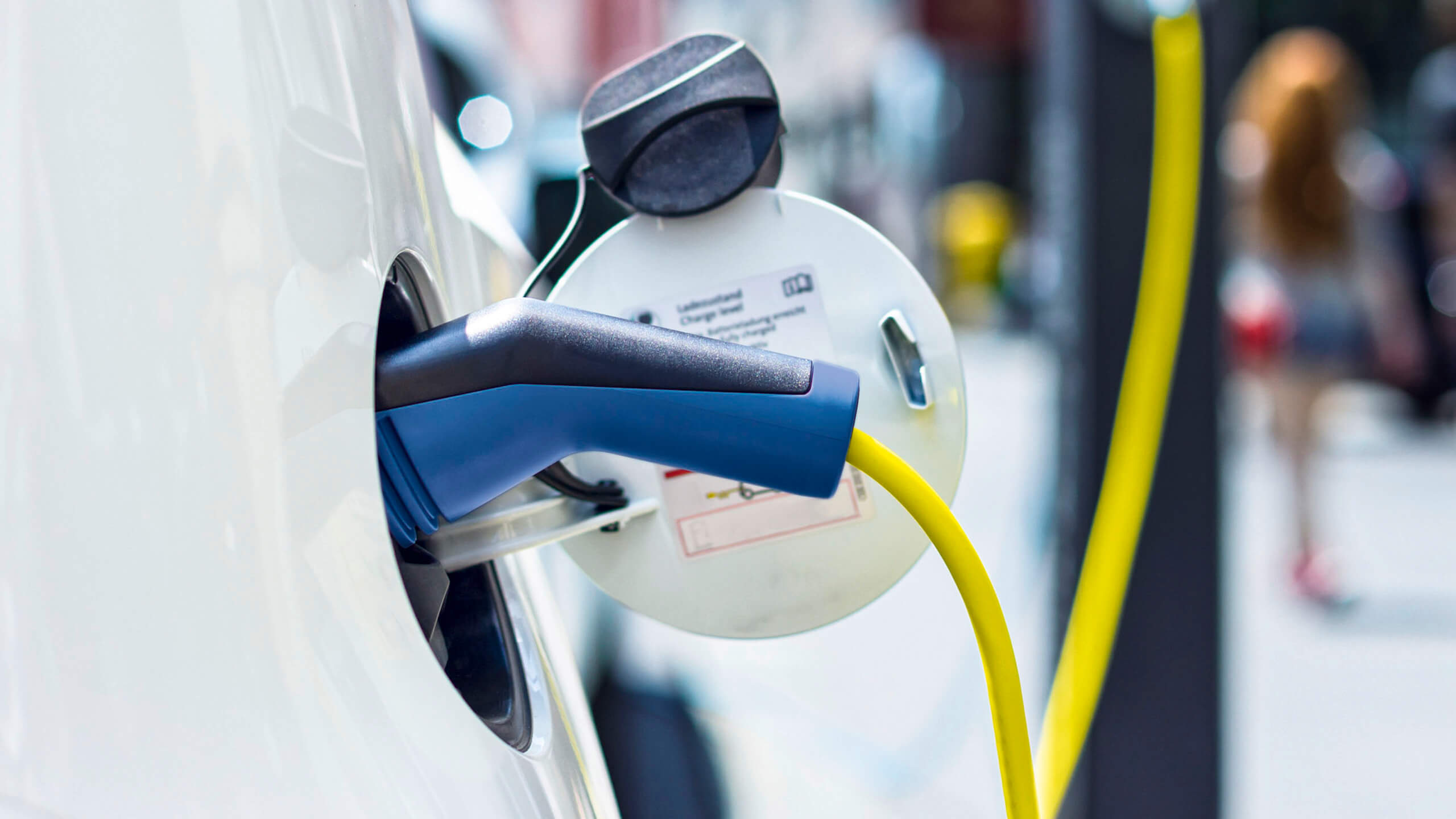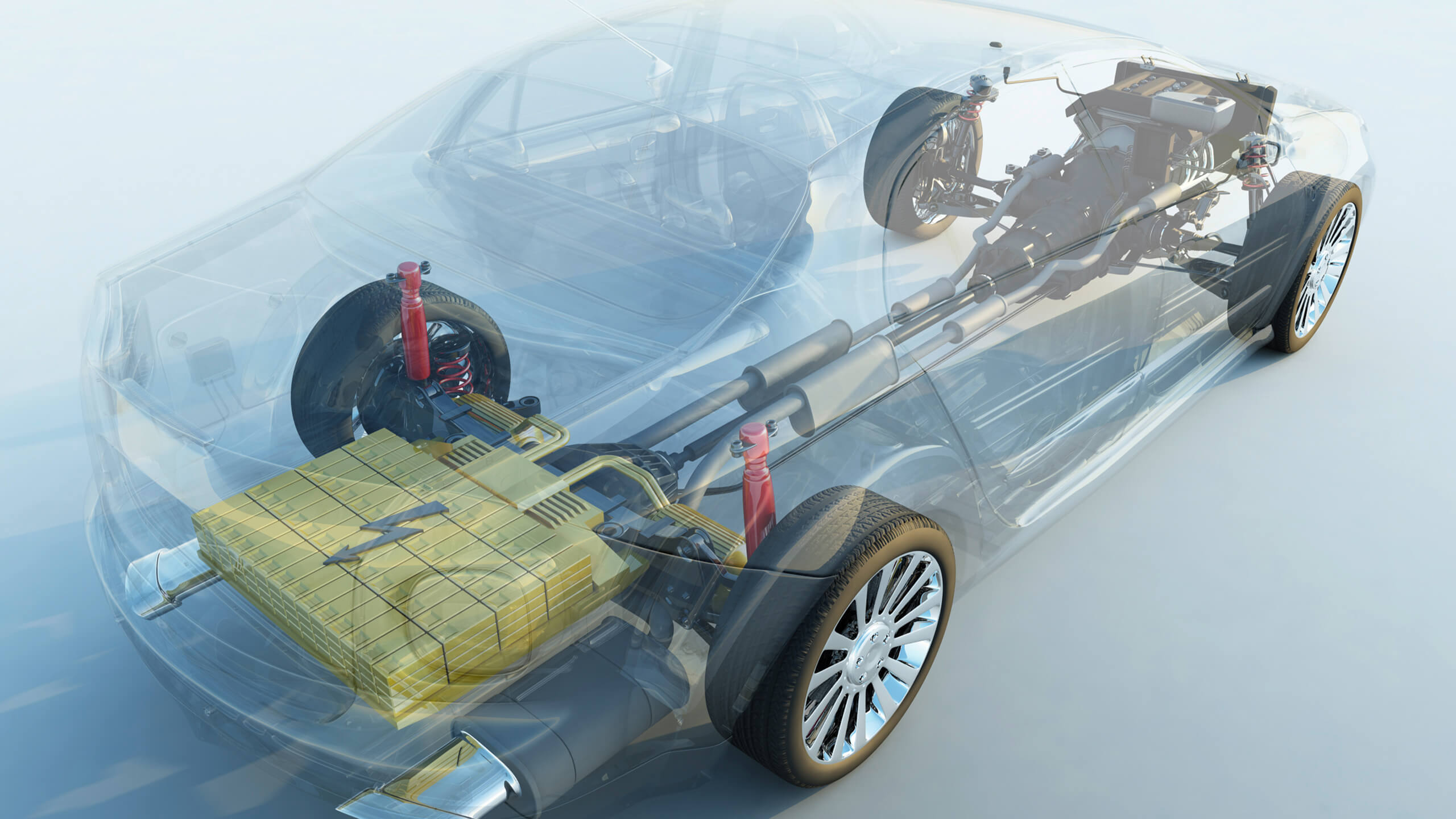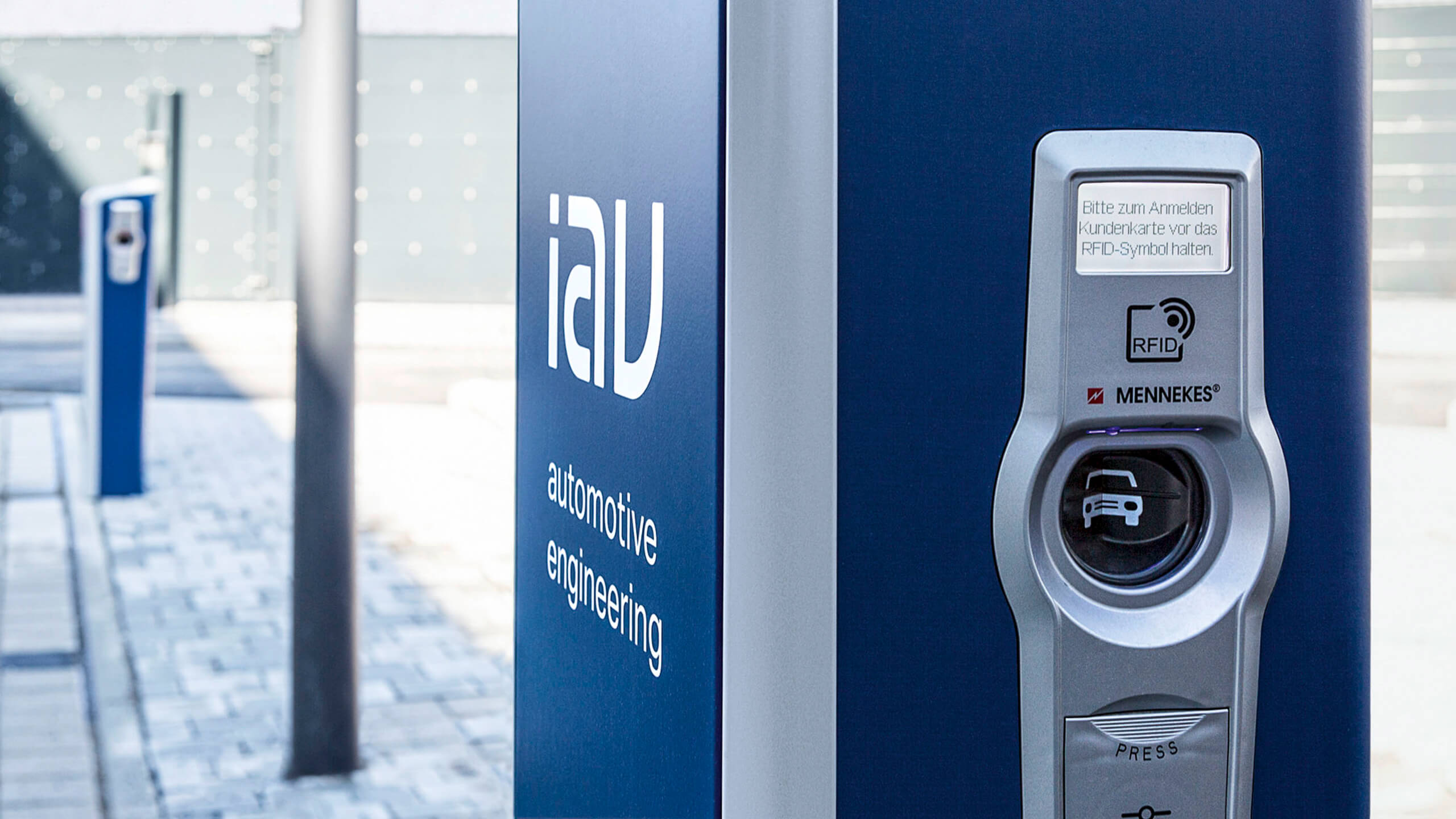E-Mobility
Mobility needs to become more sustainable and play a greater part in protecting our climate. IAV has been working on electric and hybrid drive systems for over 20 years. We always keep a clear focus on the overall “e-mobility” system from the vehicle and charging infrastructure to integration into the smart power grid. With this in mind, we are developing technical solutions and are actively involved in defining new standards.
Statutory CO2 emission regulations as well as society’s changing expectations are demanding a higher share of electric vehicles in the future mobility mix. Developing new powertrains and energy storage systems is a major challenge IAV has been addressing since the late 1990s. Today, we are in full command of the entire development chain, from electric motors and complete electric drive units, batteries and battery management systems through to charging infrastructure and connecting it to the power grid. Our engineers benefit from a vast range of expertise – from vehicles and power grids to data communication. This puts IAV in a position to work on a cross-sectoral basis when it comes to e-mobility.
In our projects, many of the tools we use we have developed in-house – such as E-Motor Synthesis – and a broad range of testing facilities, including equipment for testing electric drives and battery systems. Our crash test facility in southern Germany provides optimum conditions for testing electric vehicles with their flammable batteries. But we can also analyze the interoperability of electric cars and charging infrastructure, and work on high-voltage components with specially trained colleagues in our workshops. Every day, we gather practical experience with our growing fleet of electric company vehicles and IAV’s charging infrastructure at many of our sites.
"Electric vehicles are not only good for the climate. They are also great fun to drive.”
— Senior Vice President Chassis Development
We assist our customers from developing individual components to the production-ready full vehicle. IAV has taken on many of the technical aspects involved in developing the Volkswagen e-Crafter which provides 100 kilowatts of tractive power and a cruising range of up to 173 kilometers. These include powertrain, body shell, electrics, electronics, chassis as well as the overall vehicle.

But as a system integrator, we can also put electric drives into existing vehicles, as demonstrated by our Elocity product. IAV Elocity is an electric drive system that can be matched to any application. Consulting with our customers, we procure all powertrain components, including the electric motor, battery, power electronics and control units. We are also responsible for every aspect of engineering, such as communication within the overall system. The pilot project involves the once diesel-engined double-decker buses in Berlin that were fitted with IAV Elocity and are now used for sightseeing tours in Germany’s capital as a quiet and eco-friendly alternative.
"We benefit from all-embracing expertise in e-mobility. This makes IAV the partner to contact for end-to-end solutions.”
— Senior Technical Consultant Infrastructure Systems E-Mobility
By the same token, e-mobility will only make a proper breakthrough if there is sufficient and user-friendly charging infrastructure. This means standardizing all components to the greatest possible extent, from charging plugs to communication protocols between vehicle, charging infrastructure and power grid. Data security is just as important as “smart charging” where user demand and the availability of electric energy are matched using intelligent electricity price offers and corresponding scheduling of charging processes. This is the reason why we are involved in numerous standardization committees. We also focus our attention on the interaction between e-mobility and power grids. IAV understands every aspect of how to avoid overloads through intelligent load management just as it does the use of high-voltage batteries as a temporary means of storing surplus energy.



